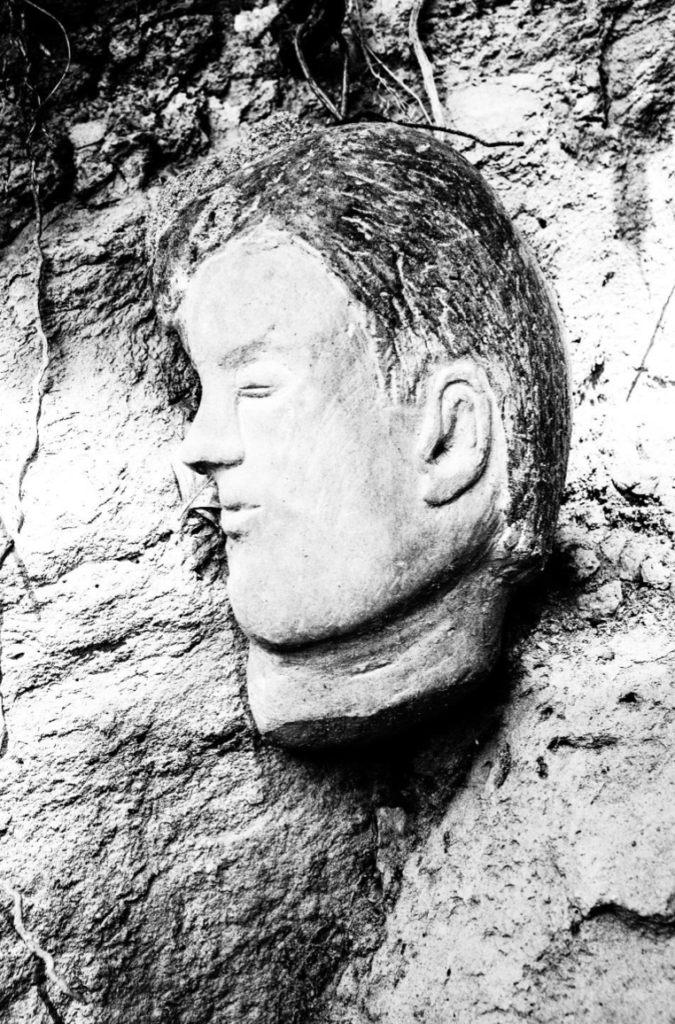Serra di Genga and Coldelce
Coldelce: (m. 320 s.l.m.) It presents itself as an uncontaminated area; devoid of industrial and artisanal settlements; the territory is for the most part covered by forests, both natural and due to man. There are crops implemented by ancient local families. It has very few inhabitants.
Serra di Genga: The toponym “Serra” indicates an elongated mountain or hill chain without strong depressions. In ancient times this area was called ‘Serra di Monteviole’ because territory subject to the jurisdiction of the neighbouring castle of Monteviole located on the borders of the territory of the Serra itself.
Currently the area of Serra di Genga is a vast area, bordered to the west by the Apsa stream, and east by the Ripe ditch, and extending from north to south, up to the confluence of the ditch in the Apsa stream to the town of Caponello.
The area presents itself with several scattered houses, many uninhabited, with a succession of cultivated land, abandoned or reduced to pasture. The inhabitants are very few. In the woods there are foxes, badgers, holyes, and many birds like the cuckoo.
Historical Hints
COLDELCE
There is no news about the origin of the castle but it is likely that it was inhabited by the first millennium A.D. to escape the barbaric invasions. The castle was part of the Urbino countryside.
The fortified core was modest in size with some houses inside.
It was accessed through a door positioned to the east without a moat.
In the village there were houses, dovecotes and vegetable gardens. There were also isolated dwellings in the surrounding countryside. The castle was devoid of a chapel and the inhabitants were forced to go to the paef.
During the sixteenth century Coldelce had a large demographic increase, about 350 people.
There were 7 churches in the territory.
During the seventeenth century there was a sharp demographic decline. The economy was based on the exclusive land income and to pay the price were the populations of rural centres crushed by debts. In 1855 the whole territory passed from local owners to ecclesiastical entities.
At the beginning of the Unification of Italy, the Coldelcese territory saw the presence of the Grossi gang. Here the thungs spent moments of idle safe from the unwelcome surprises of the carabinieri, they counted on the connivance of the population.
There was a slow and inexorable decay due to the gradual abandonment of the inhabited centre and around the 50s and 60s of the 1900s there was a total escape from the countryside making the area almost uninhabited.
Church Of San Zenone This church today no longer exists, it was mentioned as early as 1290, we do not know precisely the date of construction but certainly before the end of the thirteenth century. The name Zeno had been crippled in San Girone. It was located south of the castle of Coldelce, near the ditch of the Razzo, on the borders of the territory of Coldelce with the Petrian and Casarotonda territory.
The Monastery Of San Benedetto In the place where the monastery was located today there remains only the rubble of an old farmhouse. Years ago a large wooden cross had been raised in memory of the ancient sacred place that is no longer visible. The convent of San Benedetto di Monte Busseto was founded in an unknown era by the Benedictine monks. In 1653 the convent was suppressed. The sacred furnishings and paintings were placed in the chapel of the cemetery attached to the Pieve di San Eracliano.
San Giacomo Hospital Today there is no trace of it. In the fifteenth century the hospital existed in all communities. It hosted people passing through for simple night or temporary hospitalisation. The building consisted of some rooms provided with beds, with separate rooms for men and women. We don’t know when he was abandoned.
SERRA DI GENGA
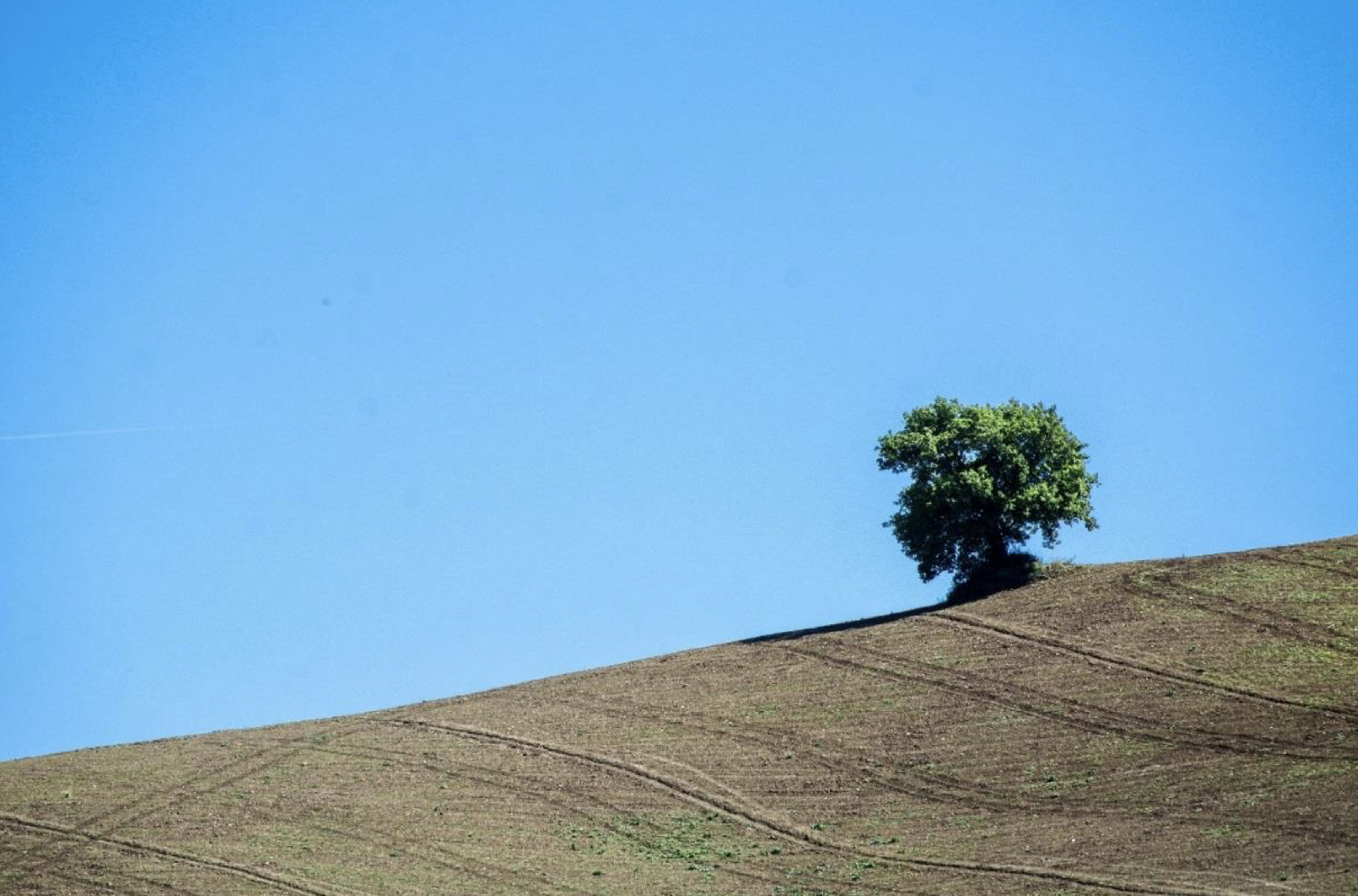
Campagna of Serra di Genga
The castle of Monteviole It was abandoned very early, already in 1400 there is no more news about it. Probably its position, not strategic, with the proximity of other castles such as Ripe and Genga and subject to landslides led to its decadence.
After the union of the territory of the former castle of Monteviole with the community of Genga, the name was changed to Serra di Genga.
In the fifteenth century there was no real inhabited centre but everything gravitated around the church of San Giovanni Battista. The population was about 200 people, but in the following centuries until the world war there was a gradual and constant abandonment of the countryside predominantly of urban centres.
The castle of Genga, Now disappeared, he was between the town of Serra di Genga and Ripe, on the edge of a cliff. Of the castle there are only pieces of cups and very small walls overhanging on the ditches. The toponym ‘Genga’ comes from the marly soil vulgarly called ‘Genga’. The castle was built around the year 1000, we have heard about it from a parchment of January 21, 1068 by Blessed Mainardo Archbishop of Urbino.
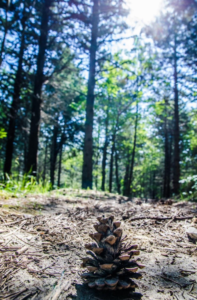
Coldelce’s forest
We don’t have much news about the castle. At the beginning of 1400 Genga has a partially fortified nucleus of houses placed above the hill and a village at the foot of the hill, called ‘La Valle’. In the castle there was the communal house that overlooks the square, in turn they make it as a corollary houses of civil dwellings, while at the back there is the cliff that serves as a bulwark. There are no real Defence walls other than on the south side where the entrance door with the adjoining bridge was placed. The parish church dedicated to San Martino was located inside the castle and nearby was the parish priest’s house. A notary also lived there. In addition to dwelling houses there were land for vegetable use, and also a hospital. Through the bridge, down a steep slope, you descended into the underlying village called ‘La Valle’. In the village were located the shops of Maniscalco and Barbiere, an oil and wheat mill. In the valley under the castle lived an illustrious character Girolamo Genga, who spent the last years of his life in this place. Most of the land of the Genga family, in the fifteenth century, were located in the territory of Ripe and Genga.
In 1446 the castle of Genga hosted Count Francesco Sforza who was planning the subsequent action against the castles subject to Rimini. In the sixteenth century there were 4 churches in the territory of Genga: San Giovanni di Serra di Genga, San Cristoforo, San Paterniano and San Sebastiano. In the sixteenth century Genga had a population of 177 people and then reduced to 40 at the beginning of the seventeenth century. In 1659 there was the suppression of the parish and the abandonment of the castle of Genga.
Bibliography:
LIGI, B. Ospedali della città e archidiocesi di Urbino dal sec. XII. al sec. XX: notizie storiche, Urbania 1973
MORETTI, L. Castelli sospesi tra sogno e memoria: Coldelce, Genga, Monteviole, Serra di Genga, Ripe, Colbordolo 1993
PALMA, L. Colbordolo. Memorie Storiche del Castello e del suo territorio, Colbordolo 1980-198
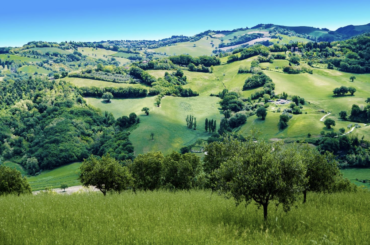
Coldelce and Serra:
Buildings of historical interest
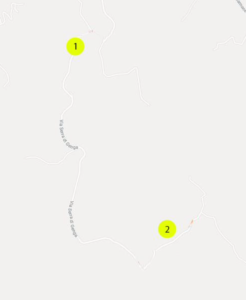
CHURCH OF ST. JOHN THE BAPTIST:
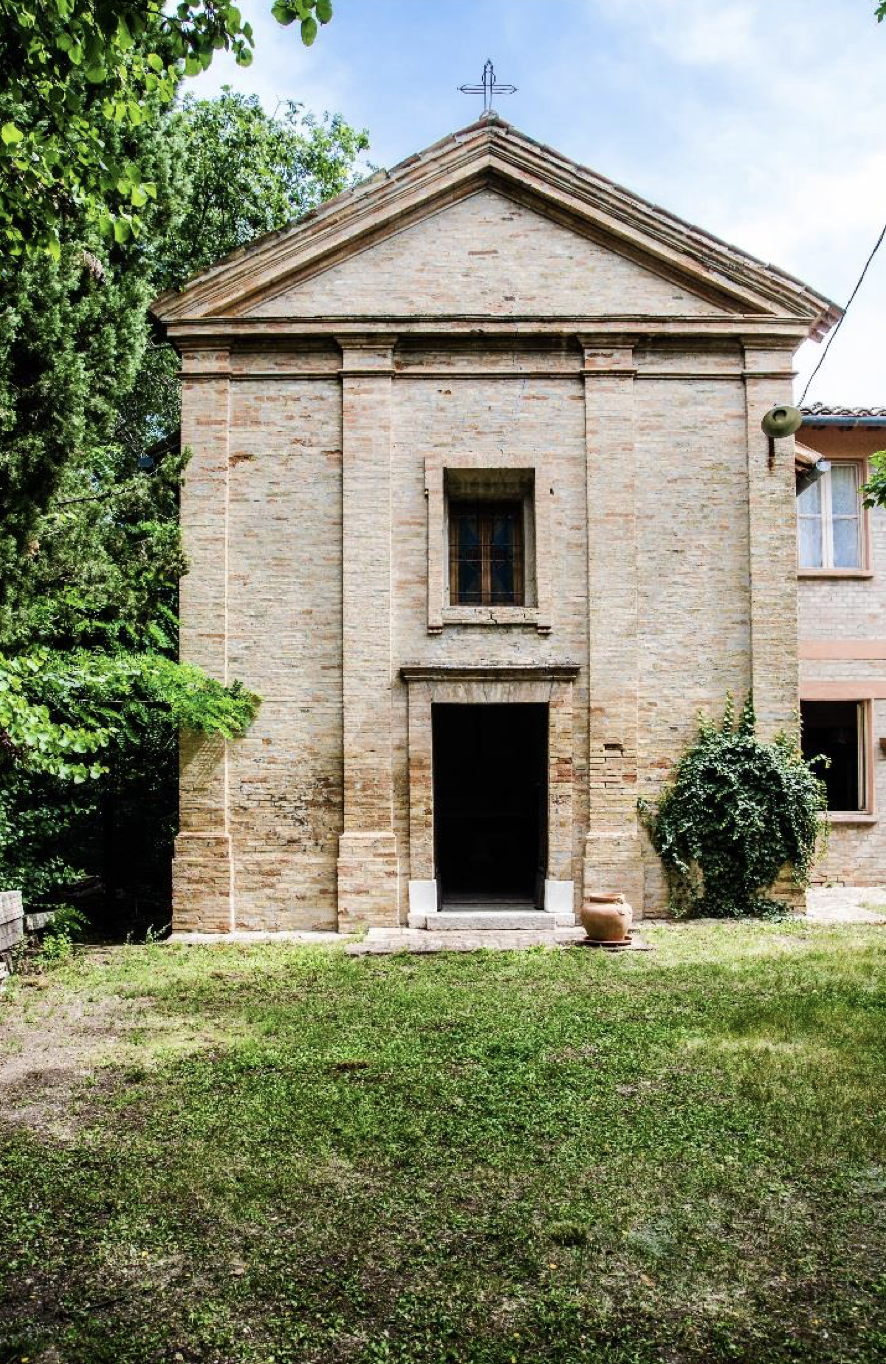
It was the parish church of the castle of Monteviole. The church is documented since the thirteenth century. But you can think of an older building since the Monteviole castle already existed in 1069.
During the sixteenth century the church building was in ruins.
In 1576 the new building located on the main communication road was rebuilt and inaugurated.
In 1793 the sixteenth-century church was demolished and a new temple with a bell tower was built in the same place. The ancient paintings were moved to the Santa Annunziata church in Morciola. It is currently privately owned. The new owners, had copies painted on canvases to beautify the church. In the high altar a crucifix is visible, while in the minor lateral altars you can admire: on the right the statue of St. Vincent in front of a Christ on the cross; on the left the reconstruction of the fresco of the Madonna and Child and under a case containing the statuette of the Madonna with a crowned child.
Near the entrance on the left is the original eighteenth-century baptismal font.
Along the walls are placed squares depicting the Via Crucis.
Next to the main building is a house with a part used as a pigeon house.
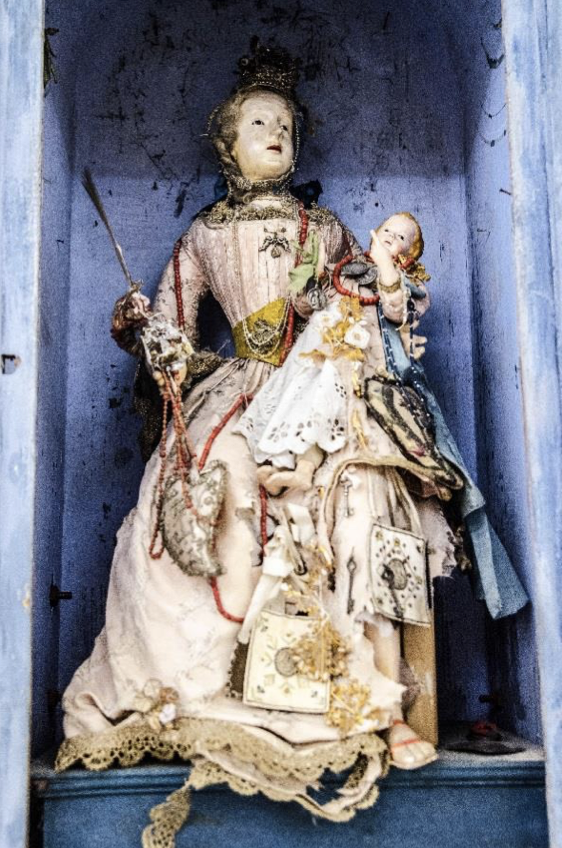
PIEVE DI SAN HERACLIANO:
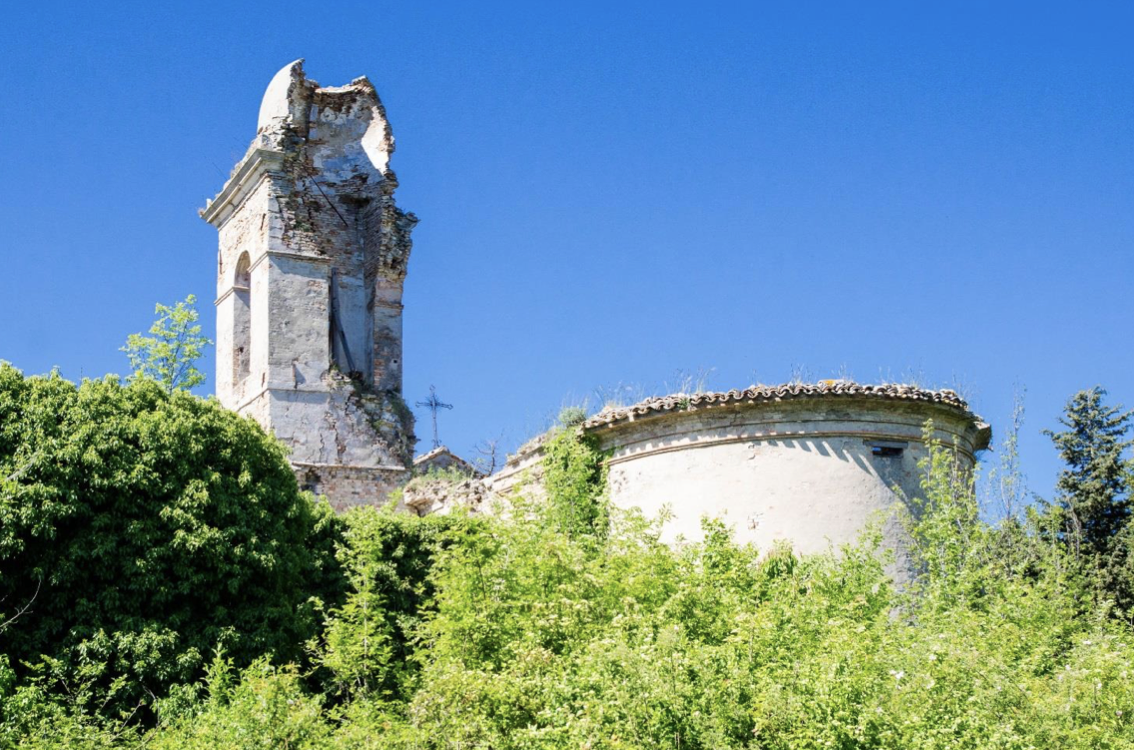
The first impression you get seeing this abandoned building so imposing in such a lonely place is amazement.
The building of the church dates back to around the year 1000. Until the fourteenth century it was subject to the bishop of Urbino who had the benefit of goods and rights also for the perception of lucrative rights.
In 1840 the church and the rectory were rebuilt. The new church measured 17 metres in length by 7.70 in width. The brick facade delimited by two parastes of Tuscan order, stauncated and rutted, was crowned by a protruding cornice on which the vaulted cover rested. In the background, a semicircular apse, with parastes and cornice, closed the body of the church. It was illuminated by 3 windows. The square-shaped bell tower completed the church and rectory complex on the outside. The small domed roof of the bell tower was not the original one but of the restoration of 1892 to remedy the continuous repairs that the first roof needed given the exposure to strong winds. On the left was the cemetery chapel, where there were 5 tombs.
It was adorned with paintings and furnishings that belonged to the suppressed convent of Monte Bussetto.
Next to the church there was the rectory divided into 2 floors: on the ground floor was the sacristy, the kitchen, dressing room for bread, the cellar, the oven and a small stable, while on the first floor there were 4 bedrooms, the living room, the wardrobe and the study.
After the death of Archpriest Don Oreste Brigidi (1965) the parish remained vacant. It was for some time the destination of unscrupulous people who devastated the tombs, stole valuables and damaged the building. Around the 80s the ecclesiastical authorities, not being able to make up for the burden of maintenance, ceded the building to private individuals. These after a first fence intervention of the site and a tampering of all the openings, left everything to abandonment.
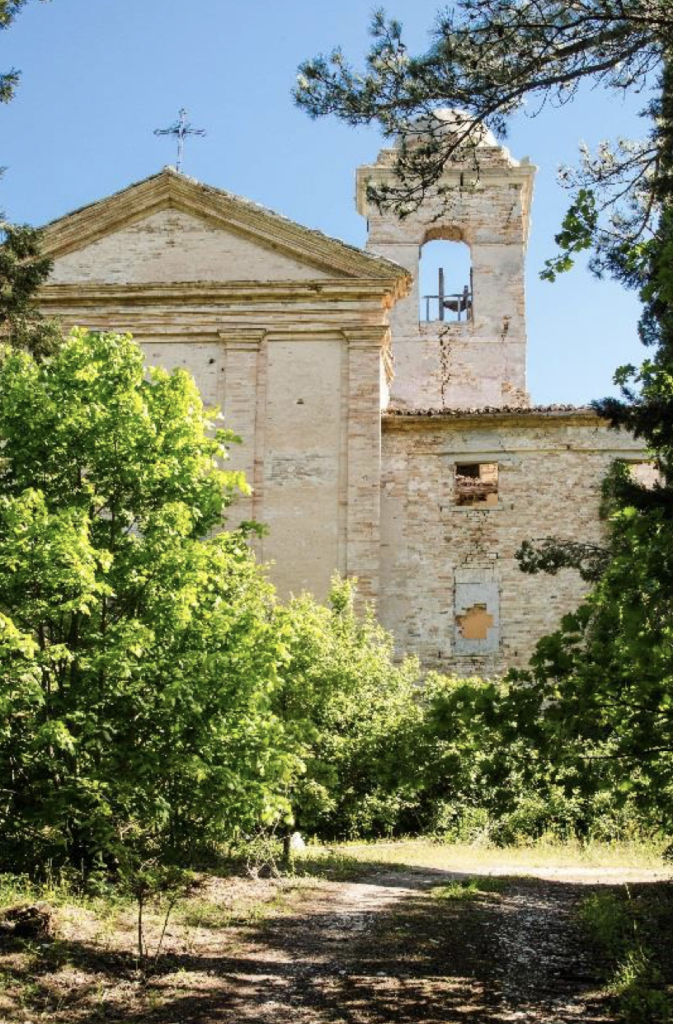
Bibliography:
FORCHIELLI, G. Le pievi rurali della vecchia diocesi urbinate, Urbino 1949
MORETTI, L. Castelli sospesi tra sogno e memoria: Coldelce, Genga, Monteviole, Serra di Genga, Ripe, Colbordolo 1993
ORTOLANI, C. Vallefoglia: identità, memoria, prospettive, Vallefoglia 2014 ORTOLANI, C. Pian del Bruscolo: itinerari tra storia, memoria e realtà, 2009 SACCO, D. Sotto gli occhi del Duca in La Provincia dei Centoborghi, Pesaro 2008
CURIOSITY
Coldelce, whose name comes from Collis Illicis, that is, hills of the Elce. The elk or eel is a tall, evergreen plant. It is curious to observe that in this area there are no more oath trees.
In 1619 there was a certain Antonio Verzari of Coldelce who asked the authorities to look for a treasure hidden underground. We don’t know if the Verzari found the treasure or is still buried in the woods of Coldelce.
On the uphill road to Coldelce are terracotta faces attached to the wall. It is not known who is the artist of these works and why they were placed right here.
